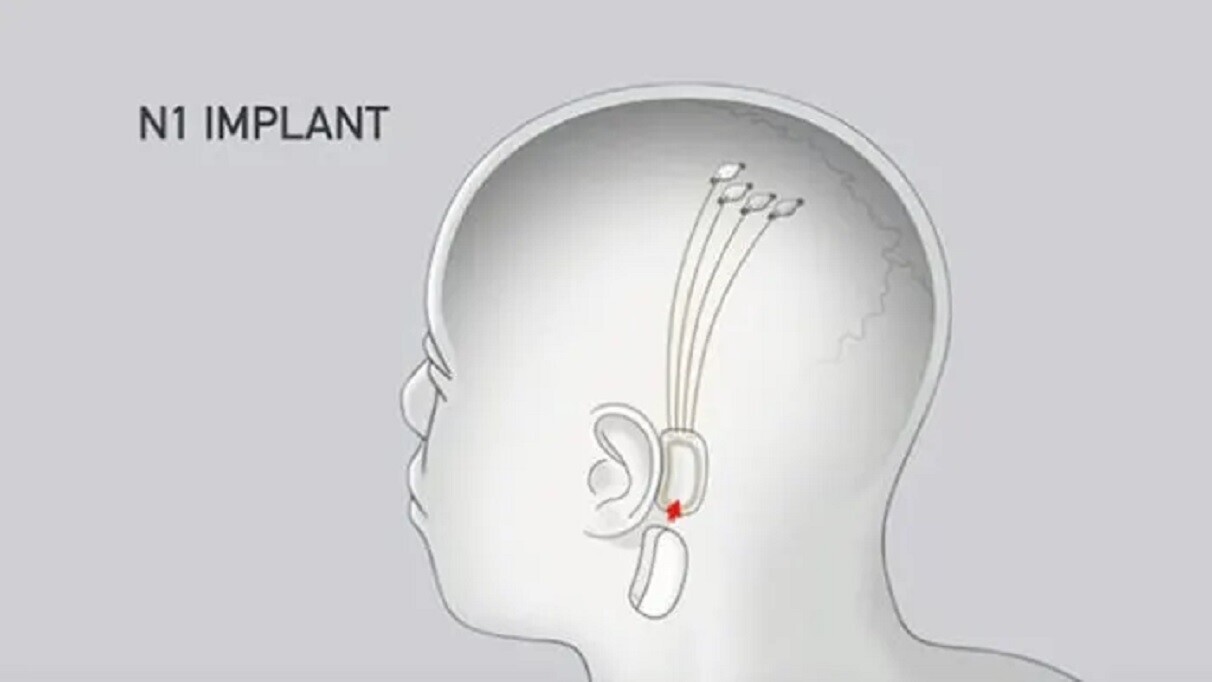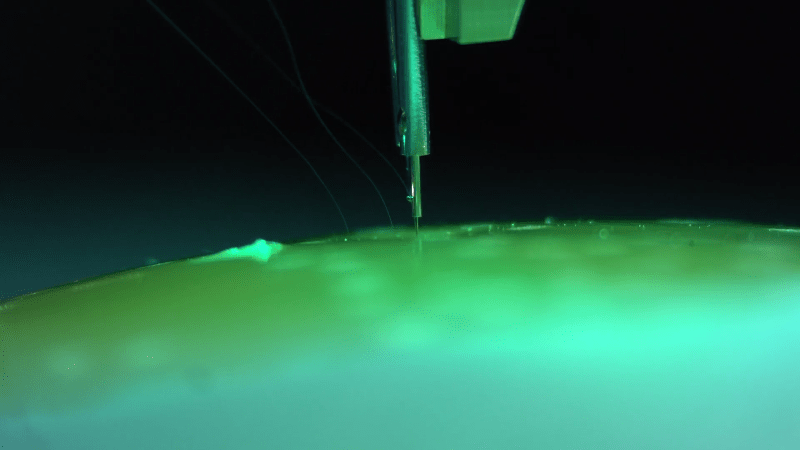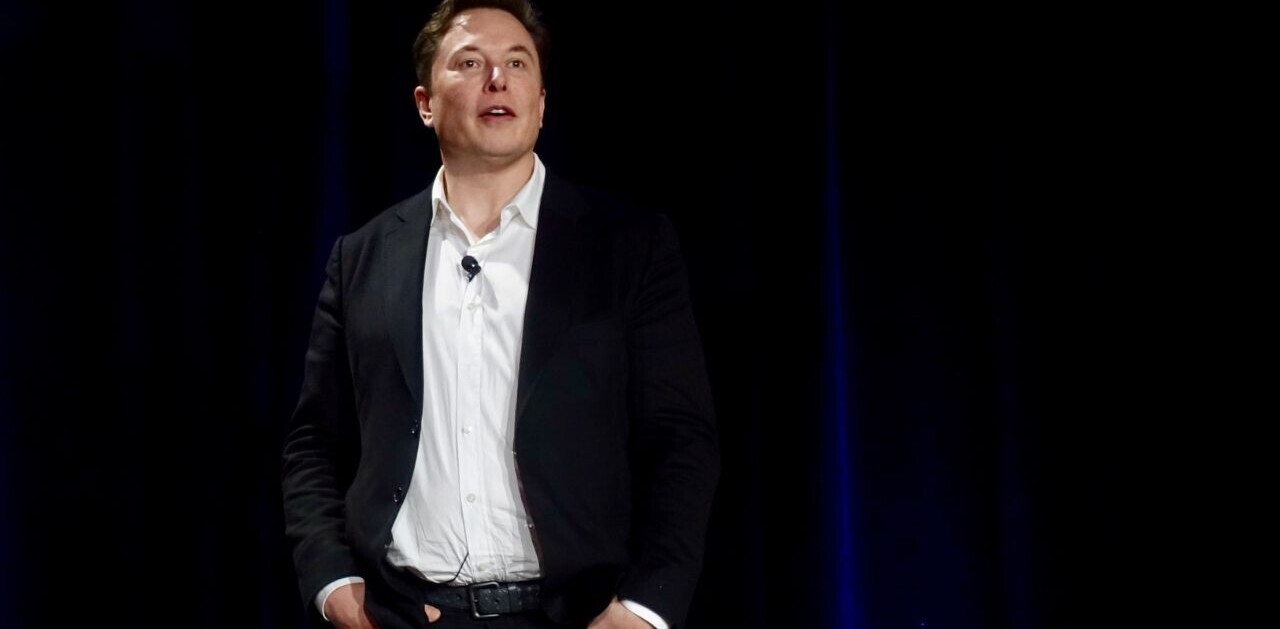
I’m reticent to use the phrase “iPhone moment for brain surgery” in the first sentence here, but Elon Musk and the team at Neuralink are set to demonstrate the progress made by the company over the past year this Friday and I’m excited.
First, it’s been rumored the company will announce human trials are set to begin this year at the event and that’s a pretty big deal. I’ll get to why in a moment.
And second: Musk’s confirmed the event will feature a live demonstration of neurons firing. This is what I’m referring to when I talk about an iPhone moment for brain surgery.
Neuralink was founded with a single purpose, one Musk recently reiterated in an interview with Axios: “The long term aspiration for Neuralink would be to achieve symbiosis with artificial intelligence.”
The big idea here is that Neuralink is building a brain computer interface (BCI), a robot to surgically install it, and all the necessary components to facilitate direct communication between computers and our brains.
Neuralink’s BCI is invasive, it has to be implanted in the skull so that tiny wires can be directly inserted into the brain. Per a research paper published by the company last year:
We have built arrays of small and flexible electrode “threads”, with as many as 3,072 electrodes per array distributed across 96 threads. We have also built a neurosurgical robot capable of inserting six threads (192 electrodes) per minute.
Each thread can be individually inserted into the brain with micron precision for avoidance of surface vasculature and targeting specific brain regions. The electrode array is packaged into a small implantable device that contains custom chips for low-power on-board amplification and digitization: the package for 3,072 channels occupies less than (23 × 18.5 × 2) mm3.
A single USB-C cable provides full-bandwidth data streaming from the device, recording from all channels simultaneously.
You read that right: Neuralink is literally going to put a USB-C cord in or on your head. Don’t get too excited at the prospect of using a fast charger to get a full night’s sleep in just 30 minutes though, because that’s not the kind of connectivity we’re looking at. While details aren’t clear yet, it’s assumed the USB-C cable connects the internal device to an external wearable that sends and receives outside signals. However, when it comes to a Musk-inspired gadget. who knows? His cars have external speakers that play fart sounds and snake jazz.

What we do know is that Musk’s pushing the device through regulatory bodies as a medical device patterned after other similar BCIs. These are typically used to deliver intracranial stimulation or other brain-modulating medical treatments.
Neuralink’s plans involve similar capabilities. Musk‘s stated that the device will be able to “solve” many brain, nervous system, and mental conditions. He’s claimed it’ll successfully treat everything from strokes to Alztheimer’s and even made dubious claims that it could eliminate autistic spectrum disorder.
[Read: Elon Musk says Neuralink can ‘solve’ autism with a brain chip. We call BS]
Musk’s known for making grandiose claims and then failing to deliver (remember when he invented the tunnel and called it the future of transportation? Or when he said there’d be a million self-driving taxis on the road by the end of 2020?). But this is different. At least I hope it is, because Neuralink could be a big damn deal for humanity if he’s been playing straight with us.
Neuralink represents the first bold steps towards transhumanism for our species. If you want to really dumb it down, think about BCI’s like the computers manufacturer’s started installing in cars in the 1990s. There was a time, long ago, when you’d take your car to a mechanic and they’d diagnose it like a human doctor making a house call. They listen to it, maybe drive it around the block, and eventually start taking things apart to see if they could confirm their suspected diagnosis.
With computers, myriad mechanical and electrical automobile problems can be diagnosed by simply connecting the car to a workstation. A BCI could offer humans similar sensing capabilities. Imagine if you could diagnose health conditions that require anecdotal evidence – such as headaches and other neurologically-induced pain – through direct, real-time analsysis of brain activity. That’d be a game-changer for anyone who’s ever had a migraine.
All that’s interesting, but none of it is new. Scientists have toiled to create a suitable BCI for medical purposes for decades. The reason Neuralink’s event is, potentially, so exciting is that it represents the first time a serious organization has attempted to bring an invasive BCI out of the realm of medicine and into the general consumer sector.
Make no mistake, Musk’s vision for Neuralink clearly states this device is aimed at everyone. The obvious non-medical benefits would include things like unlocking and opening doors with your mind or sending and receiving text messages as thoughts. These might seem like far-future tech, but the truth is that the ability to do these things has been around awhile. Neuralink’s working on the hard parts: designing scalable software and hardware and making the surgery to implant it as much like a clockwork outpatient procedure as possible.
The real benefits, the exciting stuff, has more to do with data gathering than telepathy. A BCI capable of translating brain activity in real-time with enough bandwidth to constantly stream could theoretically make mental health conditions as easily-diagnosed and treatable as physical injuries. Imagine if the mental health equivalent of a sprained wrist – say, a mildly traumatic experience – could be diagnosed with precision and treated in such a way that progress and improvement could be codified and monitored.
At any rate, the sky’s the limit. A functioning BCI may or may not bridge the gap between us and whatever fictional supercomputers Musk and the other harbingers of AI-doom think are going to make humans their pets. But it sure would be nice to have as clear an image of our own brains as we do a 2002 Ford Taurus. If anyone can convince the powers that be, and the general population, that a BCI is a good idea it’s Elon Musk.
The idea of true human-AI symbiosis seems spooky but here’s the tech take: You’re already a human-AI hybrid. You use apps for everything. Computers tell you when to wake up, what email to read, how to spell difficult words, and which lane you should be in on the interstate. You accept all of this direction – most of which is controlled by machine learning algorithms – because it’s easier than doing everything the hard way.
Now imagine controlling everything in your home and office with your mind while you bask in the glow of your newfound healthy mental state. We can all worry about the privacy and horror-scenario implications another day right?
We’re unclear exactly what time on Friday or on what platform the event will take place, but in the meantime stay tuned to @neuralink and @elonmusk on Twitter.
Progress update August 28
— Elon Musk (@elonmusk) July 9, 2020
So you like our media brand Neural? You should join our Neural event track at TNW2020, where you’ll hear how artificial intelligence is transforming industries and businesses.
Get the TNW newsletter
Get the most important tech news in your inbox each week.




